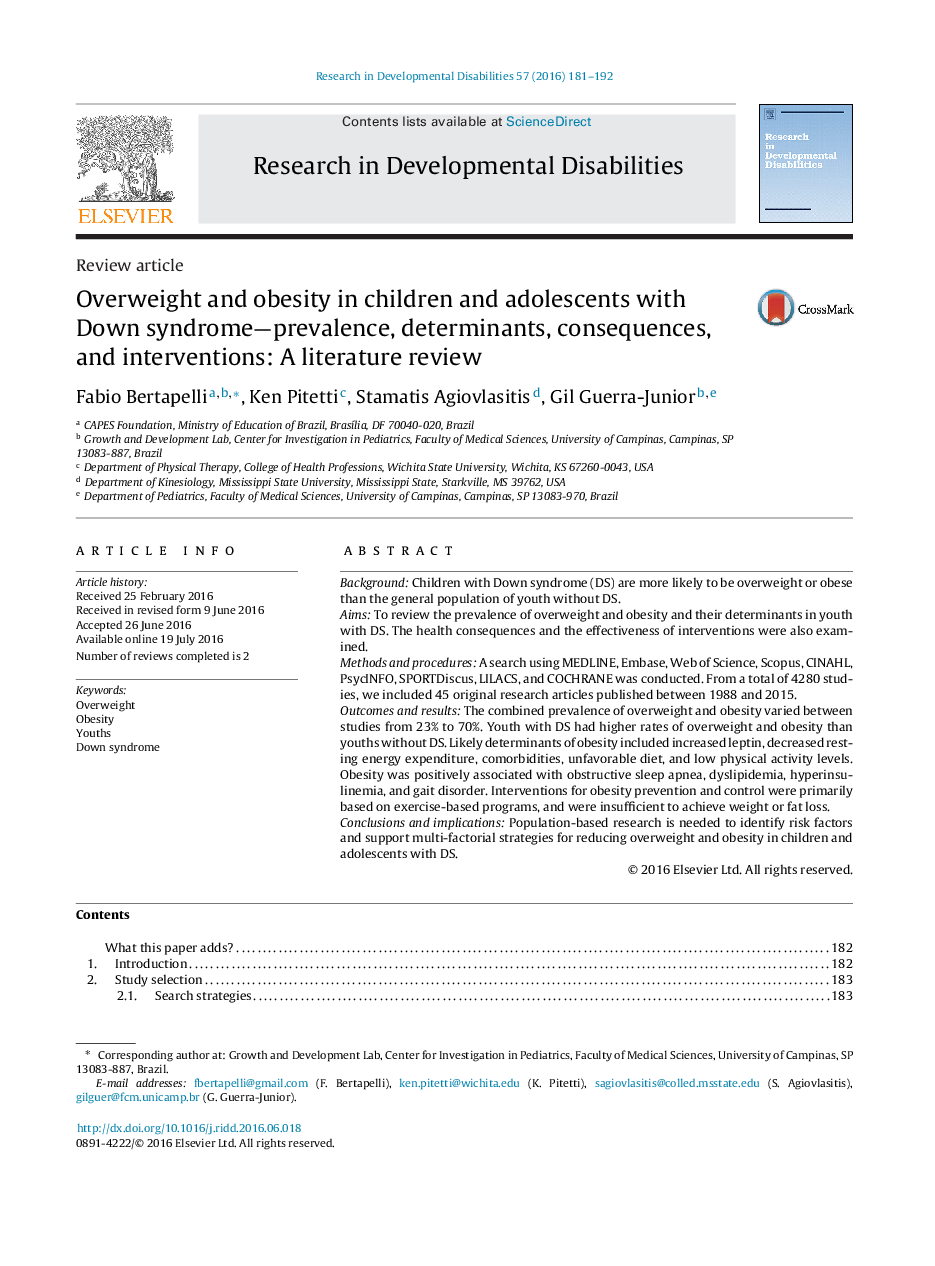| کد مقاله | کد نشریه | سال انتشار | مقاله انگلیسی | نسخه تمام متن |
|---|---|---|---|---|
| 371015 | 621893 | 2016 | 12 صفحه PDF | دانلود رایگان |
• Youth with DS were more likely to be overweight and obesity than youth without DS.
• The obesity risk increased in children with DS after age 2 years.
• Likely determinants of obesity included increased leptin, decreased resting energy expenditure, comorbidities, unfavorable diet, and low physical activity levels.
• Obesity was associated with obstructive sleep apnea, dyslipidemia, hyperinsulinemia, and gait disorder.
• Interventions for obesity prevention and control were primarily based on exercise-based programs.
BackgroundChildren with Down syndrome (DS) are more likely to be overweight or obese than the general population of youth without DS.AimsTo review the prevalence of overweight and obesity and their determinants in youth with DS. The health consequences and the effectiveness of interventions were also examined.Methods and proceduresA search using MEDLINE, Embase, Web of Science, Scopus, CINAHL, PsycINFO, SPORTDiscus, LILACS, and COCHRANE was conducted. From a total of 4280 studies, we included 45 original research articles published between 1988 and 2015.Outcomes and resultsThe combined prevalence of overweight and obesity varied between studies from 23% to 70%. Youth with DS had higher rates of overweight and obesity than youths without DS. Likely determinants of obesity included increased leptin, decreased resting energy expenditure, comorbidities, unfavorable diet, and low physical activity levels. Obesity was positively associated with obstructive sleep apnea, dyslipidemia, hyperinsulinemia, and gait disorder. Interventions for obesity prevention and control were primarily based on exercise-based programs, and were insufficient to achieve weight or fat loss.Conclusions and implicationsPopulation-based research is needed to identify risk factors and support multi-factorial strategies for reducing overweight and obesity in children and adolescents with DS.
Journal: Research in Developmental Disabilities - Volume 57, October 2016, Pages 181–192
